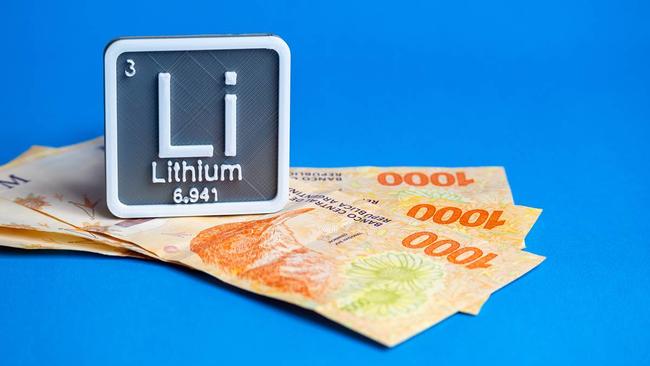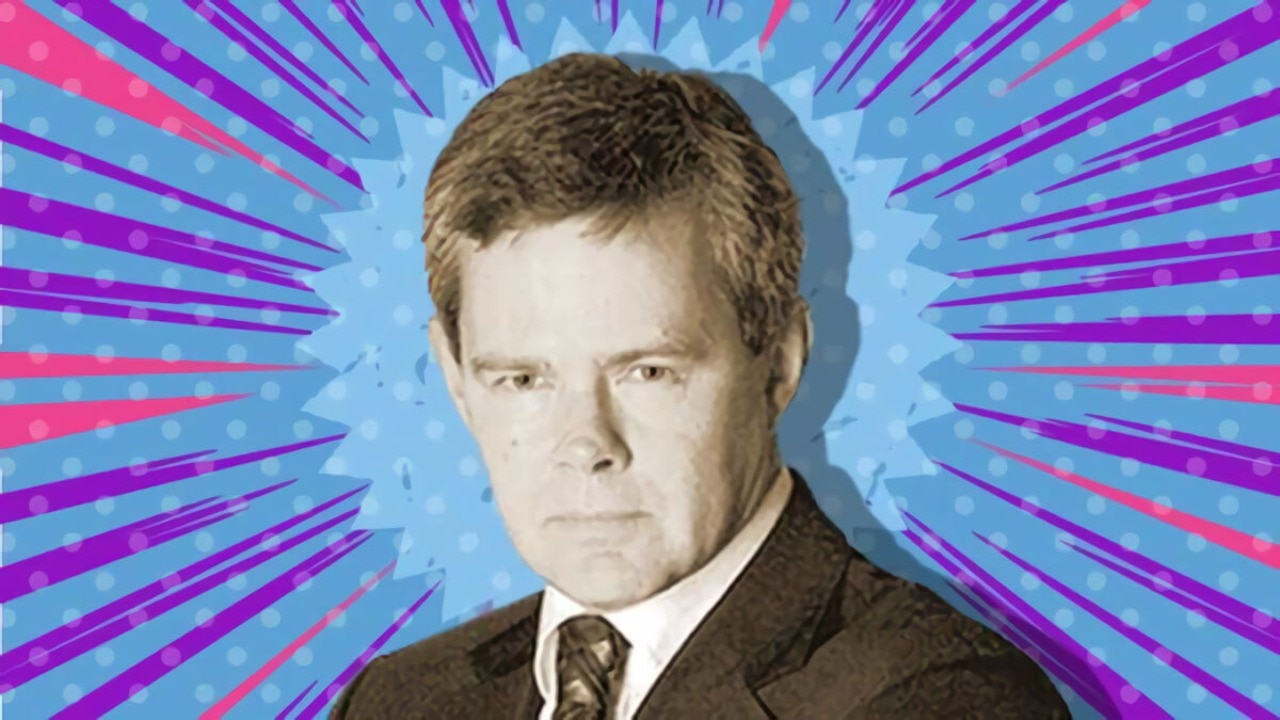Lithium could turn quickly, and Argentina is the place to be
Lithium forecasts show significant deficits emerging from 2026. And Argentina is looking like the choice jurisdiction to ride the next wave.

Stockhead
Don't miss out on the headlines from Stockhead. Followed categories will be added to My News.
Lithium forecasters are getting more bullish that deficits will emerge in 2026
Argentina is emerging as the place to be for the next upswing in the cycle
We speak to two juniors poised to springboard when lithium recovers
Most lithium jurisdictions have seen handbrakes placed on expansion projects, production centres paused and projects delayed thanks to a crunch on lithium prices caused by oversupply in the market for the electric vehicle ingredient.
Sentiment in the battery metal has tumbled as prices of lithium chemicals have slid from all-time highs of US$80,000/t and above in late 2022 to US$9100/t on Tuesday.
But EV demand growth has continued at a pace of 29% so far this year, with Rho Motion estimating 4.1 million units were sold in the first quarter of 2025.
While China accounted for 2.4m units, up 36%, EU sales were also 22% higher at 900,000 units with North American sales up 16% to 500,000 units.
As demand lifts from the transport sector and battery energy storage systems surprise to the upside, deficits could emerge quicker than a bearish market projects.
Citi for instance, late last year, projected a deficit on a lithium carbonate equivalent basis of 12,000t in 2026 and 34,000t in 2027, equivalent to around 2% of supply.
That's music to the ears of market believers like Pursuit Minerals (ASX:PUR) managing director Aaron Revelle, whose firm is continuing to advance the Rio Grande Sur lithium brine project in Argentina.
"Now, there's a lot of people saying that that's quite light – a 2% deficit," he told Stockhead.
"(But) if you look back at the major price surge, which was driven by an 8% deficit in the market that peaked the price from US$10,000 to upwards of US$80,000 per tonne.
"That was a freak event. If you look at a lot of the analyst coverage around that, no one really saw that coming."
And Revelle says there are reasons to think those stocks based in Argentina – where production is expected to buck the global trend and lift 75% this year – could be big winners when the market shift occurs.
Plenty of cheerleaders
It's not just companies themselves saying it.
Goldman Sachs analysts have long suggested they prefer "briners over miners". The big attraction is the cost base, which comes in at the bottom end of the global curve, well below the cost base of Chinese and Zimbabwean lepidolite and WA spodumene producers, with the exception of the ultra-high grade Greenbushes mine in WA's South West.
"Historically, a lot of these mines have been operating on lower margins. 10 years ago, the price was US$4000-5000 per tonne and what's being absorbed into EVs, that used to be the entire lithium market," he said.
"In fact, it was less than that for a long period of time."
Given the low cost nature of its brine operations and stalling production growth out of nearby Chile, where a process to wholly or partially nationalise salars in the former numero uno lithium producing nation has cruelled foreign investment, Argentina has emerged as a hotspot for M&A.
It was the primary focus of Rio Tinto's (ASX:RIO) recent $10 billion cash splash on Arcadium Lithium, with the mining giant also signing off on the US$2.5bn construction of the 60,000tpa Rincon DLE project in late 2024, while small cap Galan Lithium (ASX:GLN) recently knocked back a US$150 million non-binding offer from carmaker Renault and China's Zhejiang Huayou Cobalt, baying for a higher offer if it is to part with its Hombre Muerto West and Candelas projects.
The latter later announced a lithium chloride offtake and funding deal with US focused lithium group Authium, which will fund and operate a processing plant at HMW, prepping it for lithium chloride concentrate production in H1 2026.
Pursuit's Rio Grande Sur contains a JORC resource of 1.104Mt of lithium carbonate equivalent at 505.8 mg/L Li (591.9kt at 515mg/L Li indicated, 512.5kt at 512.5mg/L Li inferred), and Revelle says interest in Argentina projects is so high because of the rarity of these resources.
"There is limited supply. That's something I'm quite vocal about," he said.
"When you look at Argentina as a tier-1 address, you've got 16 known salars. There are some deposits outside of the salars, like Tres Cobales which is not included.
"But the known salars like Hombre Muerto, Rincon, Pizuelos, Rio Grande, where we're situated, these are very well mapped."
Nick Horsley, the CEO of fellow Argentine lithium brine explorer American Salars Lithium (CSE:USLI),which has interests also in projects across the US, Canada and Brazil, said those in control of the 'smart money' were seeing lithium projects in the country as a buying opportunity.
"If you kind of listen to guys like Rothschild, the time to buy is when there's blood in the street," he told Stockhead's Tylah Tully in a recent video interview.
"Companies like Rio Tinto in the last 48 months have invested over US$9 billion, over US$7bn in M&A just buying, and then they're talking about doing two and a half on their Rincon acquisition and development costs. So, the smart money, I think, is looking at this as a real opportunity to buy while the supply chains are in a bit of a surplus."
An improving regulatory environment
Combine that with an increasingly positive pro-development regulatory framework under the government of Javier Milei, and it's easy to see why businesses continue to invest in Argentina's lithium scene, which according to Australia's Department of Industry, Science and Resources will see its share of global output lift from 6% to 13% by 2030.
Argentina recently struck a deal with the IMF to release up to US$20 billion in loan funds after abandoning strict currency controls, a move that will make it easier for foreign investors to move cash in and out of the South American country, while his RIGI rules, which promise tax breaks for large projects, have also attracted major miners.
"Milei's probably produced one of the best political environments from a federal level with introduction of things like RIGI," Revelle said.
"He's attracting large scale investment, opening up the currency controls, opening up the oil and gas sector, providing that regulatory stability.
"That's a big thing, especially when you compare the Lithium Triangle, you have across the other side of the fence, Chile.
At a market cap of ~$5 million, Pursuit is among the cheapest entry points into the Argentine lithium nexus. But that doesn't mean it is not well advanced.
At Rio Grande Sur, the ASX junior has produced its first high purity lithium carbonate in a maiden operational run at a 250tpa pilot plant in the Salta Province.
The next step will be optimising processing parameters to upgrade the 98.9% LCE product to 99.95% to garner the highest premiums for battery grade product.
Staged production scenarios of 5000tpa and 15,000tpa are being assessed in feasibility studies for the commercial scale Rio Grande Sur project, with Revelle saying Pursuit was already seeing interest from Asian customers in the 5000tpa scenario across both lithium chloride and lithium carbonate products.
"We're looking towards the end of this year, early next year, to start getting some of those studies out, looking at what we need to do to take those studies from scoping-PFS level to BFS level," Revelle said.
"We're looking at what the financing is and looking at the global macro scenario as well.
"If we definitely see some of these numbers that Citi and other analysts have come out with, that surplus in the market will slowly turn to deficit or get below the forecast surplus.
"Then that really gives us the opportunity to accelerate that FID."
Customers still lining up
American Salars' Pocitos project contains a 760,000t LCE inferred resource contained across the Pocitos 1 concession (which USLI owns) and Pocitos 2 (which it doesn't).
All of the drilling for the NI 43-101 compliant resource has been conducted on Pocitos 1, which contains around 60% of the ground on which the resource is based.
Located in Salta province, Horsley says it has some of the best infrastructure solutions in the state, "if not all of Argentina".
"You have access to the port of Antofagasta by way of rail in Chile. It's got a natural gas pipeline. There's a highway access. There's lots of water," he said.
"We're south of the Rincon development owned by Rio Tinto. They're talking billions of dollars of development money and infrastructure. So in terms of that, I think we're actually situated probably in the best place.
"We're just east of Arizaro, which will see a huge development as well, south of the Olaroz-Cauchari complex as well. So I think probably the number one salar in terms of infrastructure."
Horsley said surpluses remained fragile and he was aware of "several potential offtakers".
"The supply chain is very fragile where all the analysts are predicting 2026 to enter a deficit again. That's not a huge number to put it into a deficit," he told Tully.
"You have a plant go down or consumption increases. You've really got to monitor the EV developments in China as well and also what happens if China just refuses to share lithium with the rest of the world all of a sudden."
At Stockhead, we tell it like it is. While Pursuit Minerals and American Salars Lithium are Stockhead advertisers, they did not pay for this article.
Originally published as Lithium could turn quickly, and Argentina is the place to be


